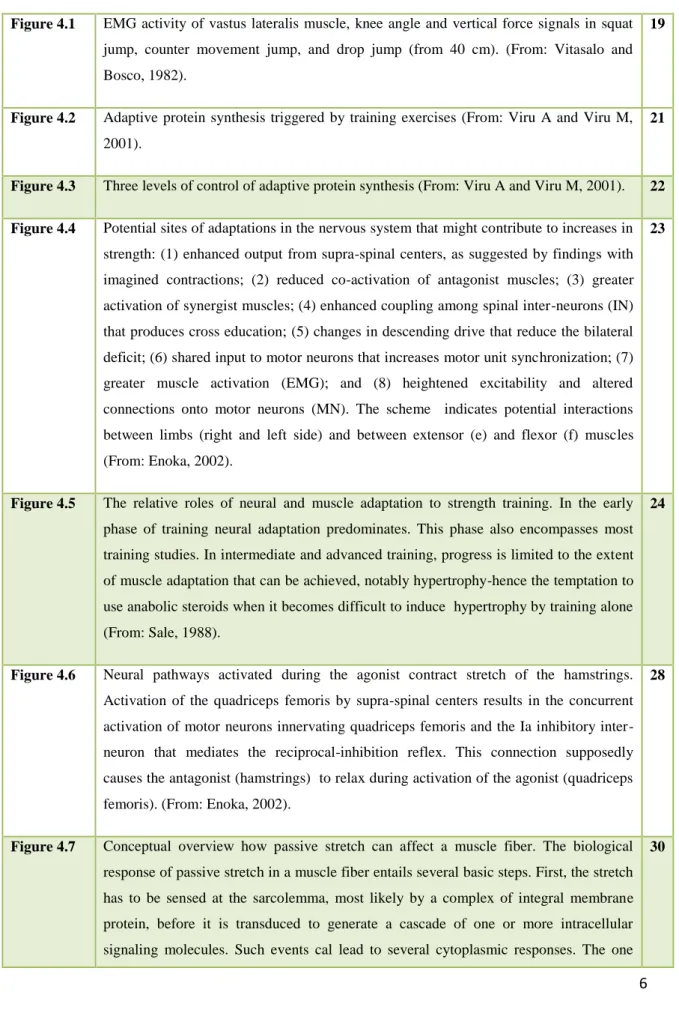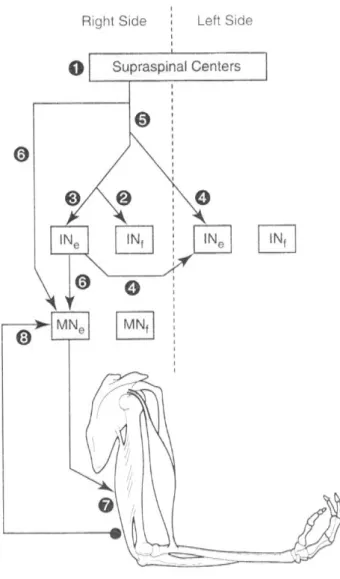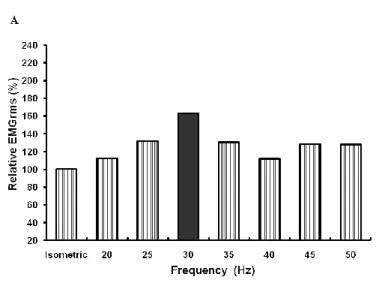22 Figure 4.4 Potential sites for adaptations in the nervous system that can contribute to increases in. Whole-body vibration modulates (A) skeletal, (B) muscular, (C) endocrine, (D) nervous, and (E) vascular systems, which can elicit secondary responses through interaction between the systems (From: Prisby et al., 2008).
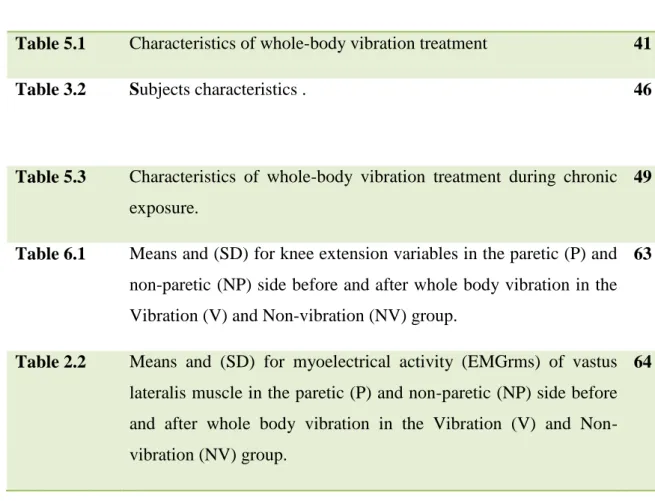
Significance of the Problem
11 Vibration plates currently available on the market deliver vibration to the whole body using two different systems: (1) reciprocating vertical displacements on the left and right sides of a fulcrum; (2) the entire plate oscillating uniformly up and down (24). The latter study supports the muscle tuning paradigm and underlines the choice of frequency as an important factor during exposure to whole body vibration.
Research problem
The effects of vibration on explosive and reactive strength when applying individualized vibration
Effects of individualized whole-body vibration on muscle flexibility and mechanical power
Low resonance frequency affects differently strength of paretic and non-paretic leg in patients with
Effect of individualized vibration frequency
Acute, acute residual and chronic effect of vibration
Effect of low resonance frequency
Muscle Strength
The better the athlete's qualifications, the greater the role of the level of force development in achieving a high level of performance. The concentrations of these hormones in the blood largely determine the metabolic state of the muscle fibers (101).
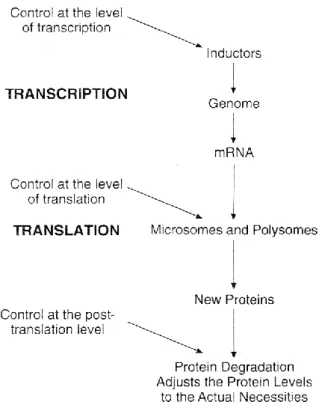
Muscle flexibility
1 hold-relax (HR) consists of an initial maximal isometric contraction of the muscle to be stretched (antagonist), followed by relaxation and stretching of the muscle to the limit of the range of motion. In this scheme, voluntary activation of the agonist involves activation of both alpha (ɑ ) and gamma (ɣ ) motor neurons and the interneuron (I) that mediates the reciprocal inhibition reflex (Figure 4.6).
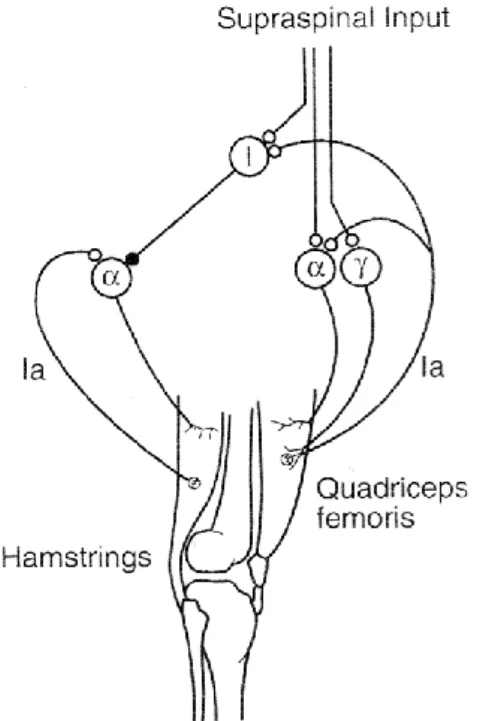
Effects of whole-body vibration on human performance
The potential effects of whole body vibration on various physiological systems can occur via direct or indirect mechanisms (Figure 4.9). The potential effects of whole body vibration on physiological systems and the potential interaction between systems. Recently, after both acute (26, 51) and chronic treatment (39, 93) an improvement in the flexibility of the thigh muscle by the application of whole body vibration has been reported.
Whole body vibration assumes that a tonic vibration reflex is similarly elicited by direct or indirect application of vibration to muscles or tendons. The increased flexibility remaining after a session of whole-body vibration ( 26 , 51 ) suggests that exposure to vibration may activate inhibitory Ia interneurons of the antagonist muscle ( 42 ). Effects of low stimulation frequencies on the muscle strength of the elderly when applying whole body vibration.
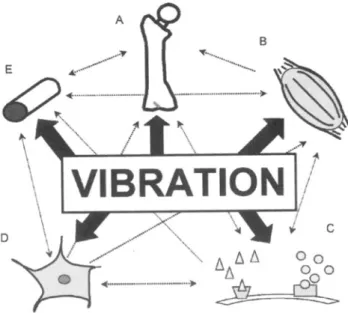
Effect of individualized vibration frequency
Acceleration of the vibrating plate as the frequency of vibration was increased by 5 Hz every 5 s from 20 to 50 Hz. The participants of the two vibration groups were exposed to whole body vibration three times a week (Monday-Wednesday-Friday) for 8 weeks. To avoid a small counter-movement during the squat jump, a rope with metal stops was used placed under the gluteus of the participant at a position corresponding to a knee angle of 90° (measured with an electrogoniometer attached to a Muscle-Lab is connected).
The elevation height of the center of gravity in the squat jump and counter-movement jump was determined by time of flight according to the method of Asmussen and Bonde-Petersen (2) and used to analyze the explosive power characteristics of the leg. muscles as noted elsewhere. In a matched group of participants, the day-to-day reliability of the continuous rebound jump was 0.94 (coefficient of variation = 2.9) for jump height and 0.95 (coefficient of variation = 2.7) for power. Day-to-day reliability of measurements (3 trials on consecutive days) was calculated using intraclass correlation (Crombach's α coefficient to determine intersubject reliability) and coefficient of variation (to determine intrasubject variation) as described by Hopkins (46).
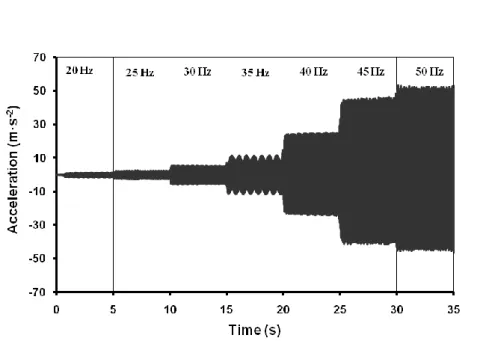
Effect of acute, acute residual and chronic whole body vibration
The vibrating platform was modified to allow subjects to perform the stand and reach test on the same plate. All subjects stood on the vibration platform in exactly the same body position (Figure 6.2), and the vibration frequency was set individually for each subject as described previously. Subjects in the vibration group, who were tested for acute and residual flexibility, underwent 10 sets of 1-min (10 × 1) whole-body vibrations with a 1-min rest between sets and a 4-min rest after the first five sets of vibrations (5 × 1).
The test was repeated in the last 10 seconds of each 1-minute series, performed by the subjects on a vibrating platform. The test was repeated in the subjects of the Vibration Group immediately after the first five sets of whole-body vibrations, and then after 2 and 4 minutes. This was followed by a 4-minute pause, after which subjects completed the treatment session (other 5 series), and the stance and reach test was performed at and 8 minutes after the end of the vibration intervention.
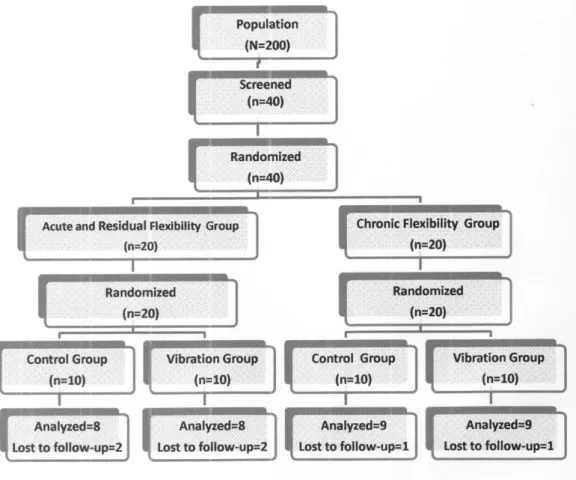
Effect of low resonance frequency
Knee extensor torque production was determined under isometric and eccentric contraction using a computerized dynamometer (MultiCont II, Mediagnost, Budapest and Mechatronic Kft, Szeged, Hungary). The two drivers with the lever arm were located on the left and right side of the dynamometer, which allowed separate torque measurement of the affected and unaffected leg. The patients were instructed to perform torque under isometric contraction and after reaching 20% of the established maximum isometric torque.
Representative isometric knee extension torque and rectified EMG data for the vastus lateralis (VL) of the non-paretic (A) and paretic (B) legs performed without time limitation by one of the patients. Electrodes were placed over the vastus lateralis of the paretic and non-paretic legs. EMG signals were full-wave rectified and root-square (rms) transformed of the raw EMG data with a 20-ms smoothing window.
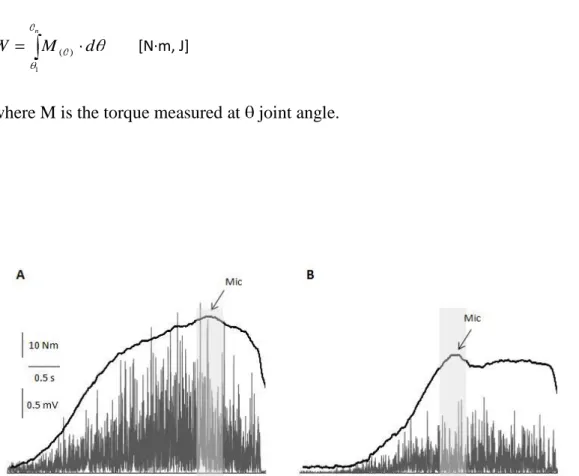
Effect of individualized vibration frequency
Significant difference for the fixed vibration group from 4 weeks; ++ Significant difference for the control group from 4 weeks; *Significant difference for the individual vibration group from 0 weeks and **from 4 weeks. 0-weeks = before vibration; 4 weeks = after 4 weeks of vibration; 8 weeks = after 8 weeks of vibration; 9 weeks = one week after completion of vibration treatment. 0-weeks = before vibration; 4 weeks = after 4 weeks of vibration; 8- weeks = after 8 weeks of vibration; 9 weeks = one week after completion of vibration treatment.
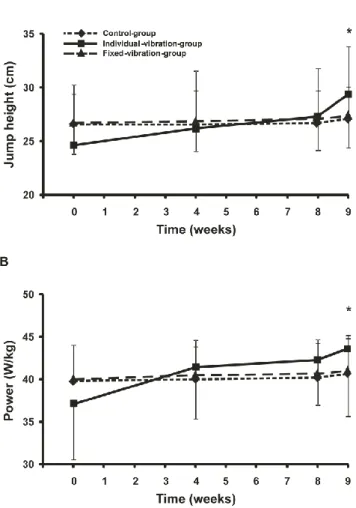
Effect of acute, acute residual and chronic whole body vibration
Relative change of residual flexibility after one whole-body vibration session (6 minutes after end of treatment). Chronic exposure to whole-body vibration did not cause significant changes in flexibility over time (P > 0.05) (Figure 6.8), while drop jump performance (1 week after end of treatment) performance of the Vibration Group increased significantly. with a benefit of 16% (P = 0.019) (Figure 6.9).
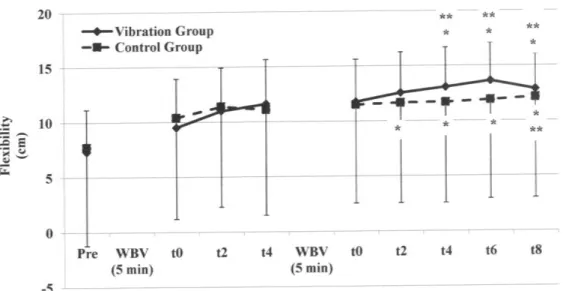
Effect of low resonance frequency
Relationship between non-paretic (NP) and paretic (P) leg strength during isometric contraction before and after the intervention. Means and (SD) for myoelectric activity (EMGrms) of the vastus lateralis muscle in the paretic (P) and non-paretic (NP) side before and after whole-body vibration in the Vibration (V) and Non-vibration (NV) group ). Although the Mec increased in the non-vibrated group, the differences in the pre-post comparison were not significant (Table 6.1).
Although patients produced greater mechanical work with the unaffected leg after the WBV procedure, the pre-post Wec difference was not statistically significant. The NP/P ratio decreased in both the NV and V groups by 2.9 and 10.4%, respectively, but the difference was not significant in either group compared to pre-fast (Figure 6.11). Strength ratio of non-paretic (NP) and paretic (P) leg during eccentric contraction before and after intervention.
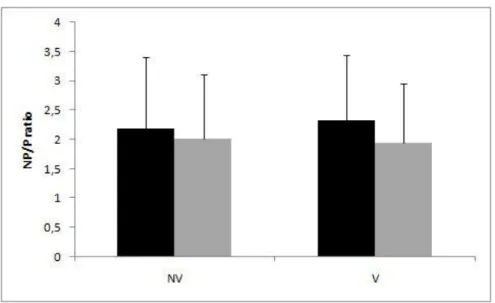
Effect of individualized vibration frequency
In this study, the individual frequency used during whole-body vibration for each participant was estimated from EMGrms activity. Although the participants in this study were physically active men and women, they still showed significant improvements in vertical jump height after whole-body vibration when an individual frequency was used for vibration therapy. A second aim of this study was to determine whether whole-body vibration produces similar improvements in vertical jumps that use different muscle contractions in the preparatory phase.
It is also possible that whole-body vibration would increase jump height more in the countermovement and continuous rebound jump than in the squat jump because the stretch reflex elicited in these jumps would increase motoneuron excitability and thus jump height (65). Most likely, the large and relatively slow angular displacement in the countermovement jump did not elicit the stretch reflex, which is more influenced by whole-body vibration than by voluntary effort. As expected, the greatest improvement in jump height is achieved in the continuous rebound jump, as it has the shortest angular lag.
Effect of acute, acute residual and chronic whole body vibration
The mechanical action of vibration is to produce rapid and brief changes in the length of the muscle-tendon complex. The influence on the mechanical properties of the muscle-tendon complex may also explain the significant increase in flexibility observed in the Control Group. Therefore, the increased flexibility seen in the Control Group should be attributed not to warm-up effects, but to the position taken by the subjects.
In the example reported above, the relative change for the vibration group would be 50% and 47% for the control group. In addition, when 4 weeks of whole-body vibration is combined with the contract-release-stretching method, there may be an additional 30% positive effect on hamstring flexibility (93). In light of these considerations, a benefit arising from the combination of the regular training load these female competitive athletes underwent and whole-body vibration in the vibration group cannot be ruled out.
Effect of low resonance frequency
We observed 32.8 % and 10.9 % improvement in Mic on the paretic and non-paretic side, respectively, which can mostly be attributed to the increased activation of the motor cortex. It appears that the rapid recruitment of motor units and their synchronized function is not associated with the greater facilitation of the motor cortex, although the increased isometric force usually leads to the increase of RTD. The low stretch velocity is unlikely to elicit a stretch reflex and therefore we assumed that the increased force could be attributed to the increasing resistance of the elastic elements.
From this result, we can conclude that the significant improvement in the intact side can be attributed to the increased isometric force, resulting in increased stiffness of the serial elastic elements (mainly tendon). The increased work capacity of the muscles on the paretic side indicates that the patients may be able to hold exciting motor cortex longer, resulting in greater torque production during the eccentric contraction. It appears that the duration of WBV treatment does not affect the degree of improvement, at least beyond six months.
Effect of individualized vibration frequency
Bogaerts A, Verschueren S, Delecluse C, Claessens AL, Boonen S. 2007) Effects of whole-body vibration training on postural control in elderly individuals:. 2009) Effects of whole-body vibration training on cardiorespiratory fitness and muscle strength in older individuals (a 1-year randomized controlled trial). Delecluse C, Roelants M, Diels R, Koninckx E, Verschueren S. 2005) Effects of whole-body vibration training on muscle strength and sprint performance in sprint-trained athletes.
The effects of a whole-body vibration program on muscle performance and flexibility in female athletes. 2007). 2004a) Effects of 24 weeks of whole-body vibration training on body composition and muscle strength in untrained women. 2004b) Whole-body vibration training increases knee extension strength and range of motion in older women.
